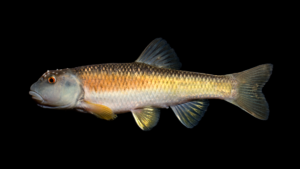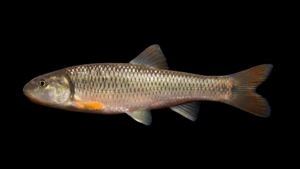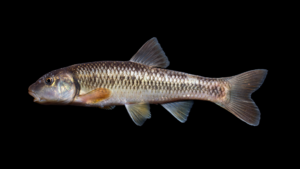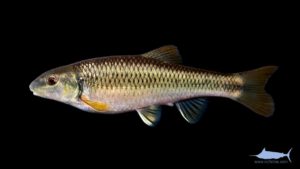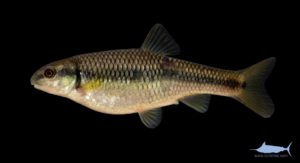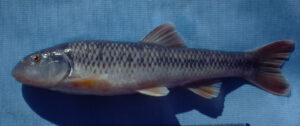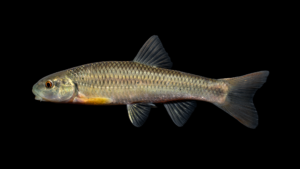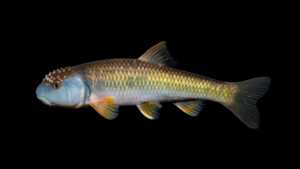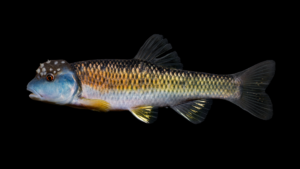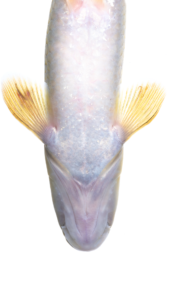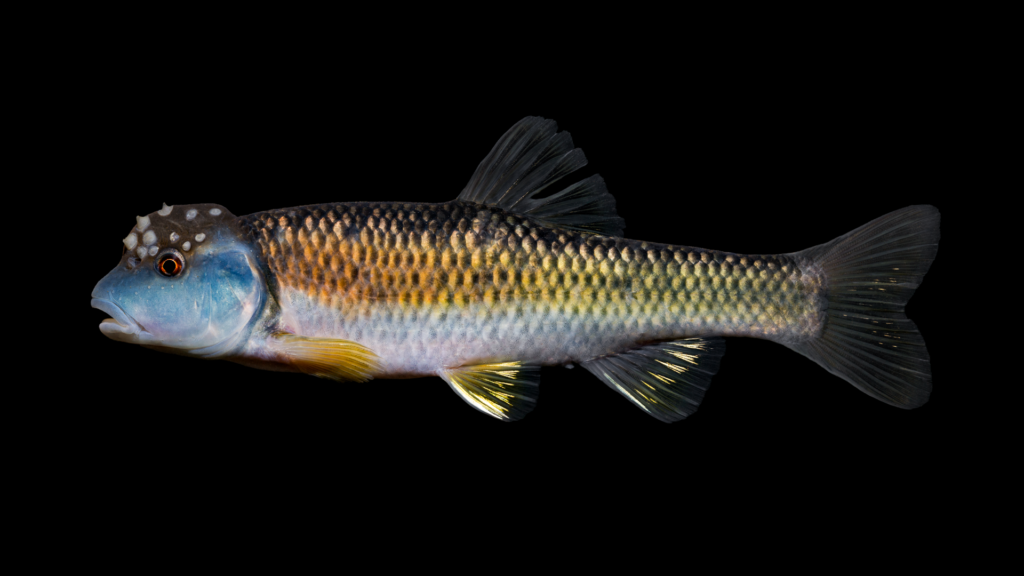
| Family | Scientific Name | Author | Year | Common Name |
| Leuciscidae | Nocomis leptocephalus | (Girard) | 1856 | Bluehead Chub |
Nocomis leptocephalus
Unique Characters: Large, stout body. Conical barbel at corner of large, slightly subterminal mouth. Intestine strongly whorled, with dark transverse intestinal loops visible through body wall of young. Fairly short, rounded snout. Breeding male has large blue hump on top of head, large tubercles on the head behind the nostrils to the occiput, but not on snout; orange or blue sides. No black spot in front of dorsal fin. Dorsal fin origin is over pelvic fin origin. Young specimens may be confused with young Highback Chub, Hybopsis hypsinotus.
Similar Species:
The other three species of Nocomis in North Carolina (N. raneyi, N. micropogon, and N. platyrhynchus) have longer snouts, tubercles on the snout in front of the nostrils, and an intestine that is not whorled.
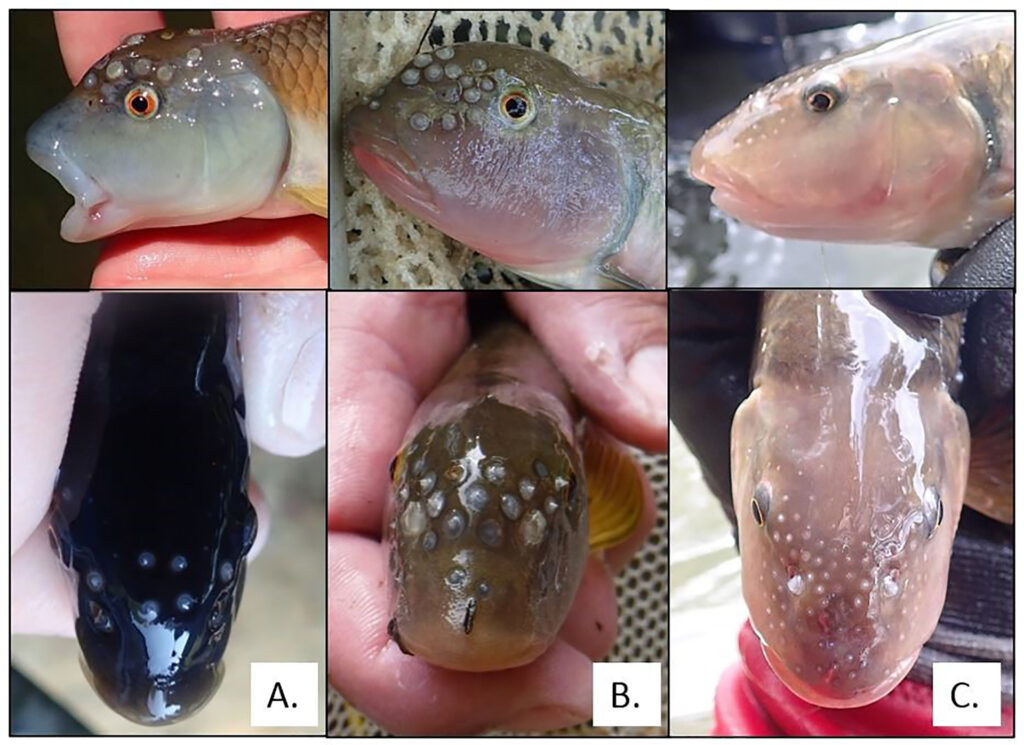
Photo Credit: Luke Etchison NCWRC
Creek Chub
Semotilus atromaculatus
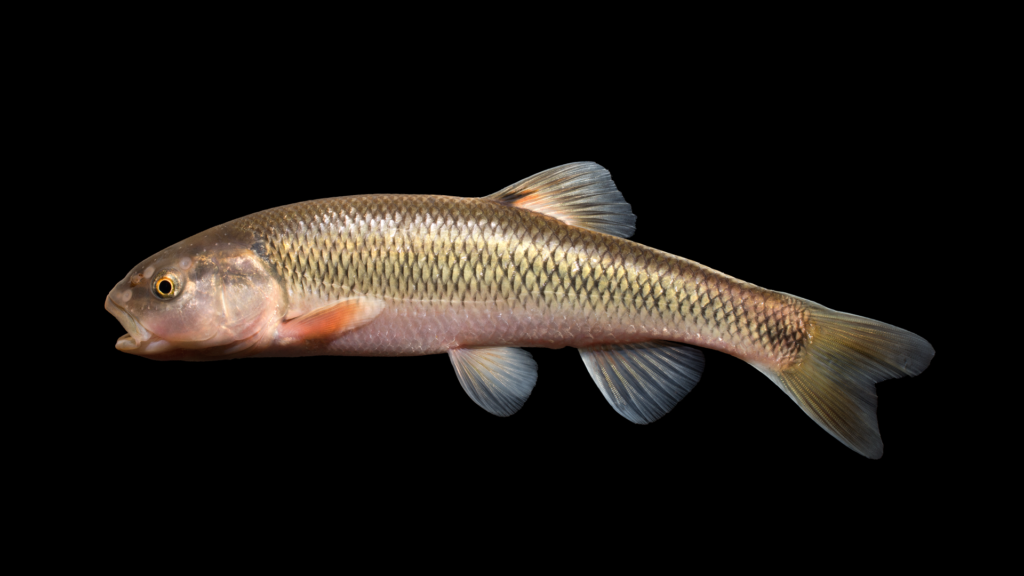
Creek Chub Semotilus atromaculatus. Has a small flap-like triangular barbel in the groove near the corner of the mouth and a well-defined black spot at the base of the dorsal fin. Dorsal fin origin is behind pelvic fin origin.
Sandhills Chub
Semotilus lumbee
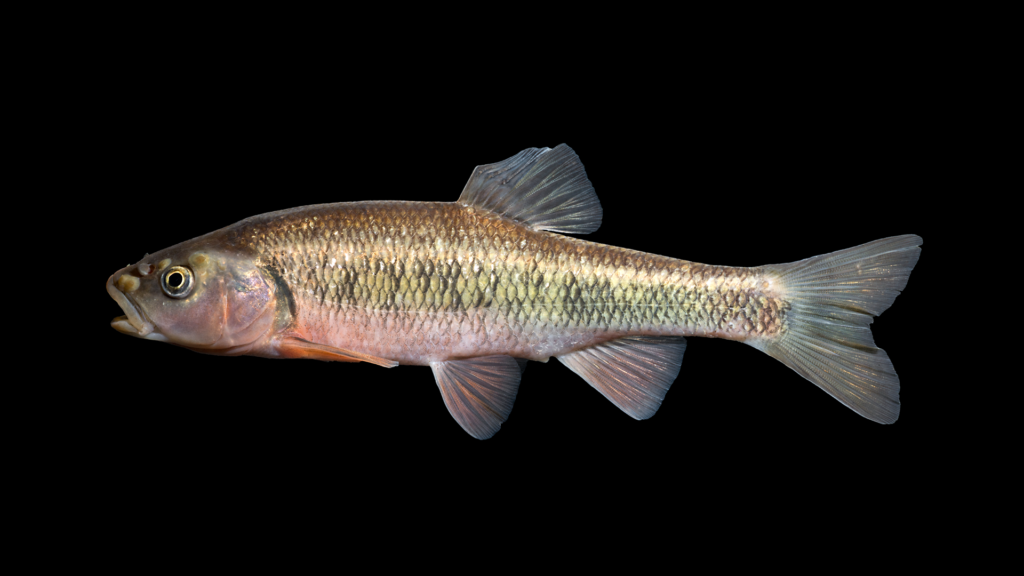
Sandhills Chub Semotilus lumbee. Very similar to the Creek Chub. Has a small flap-like triangular barbel in the groove near the corner of the mouth. Fewer lateral line scales, and no black spot at base of dorsal fin.
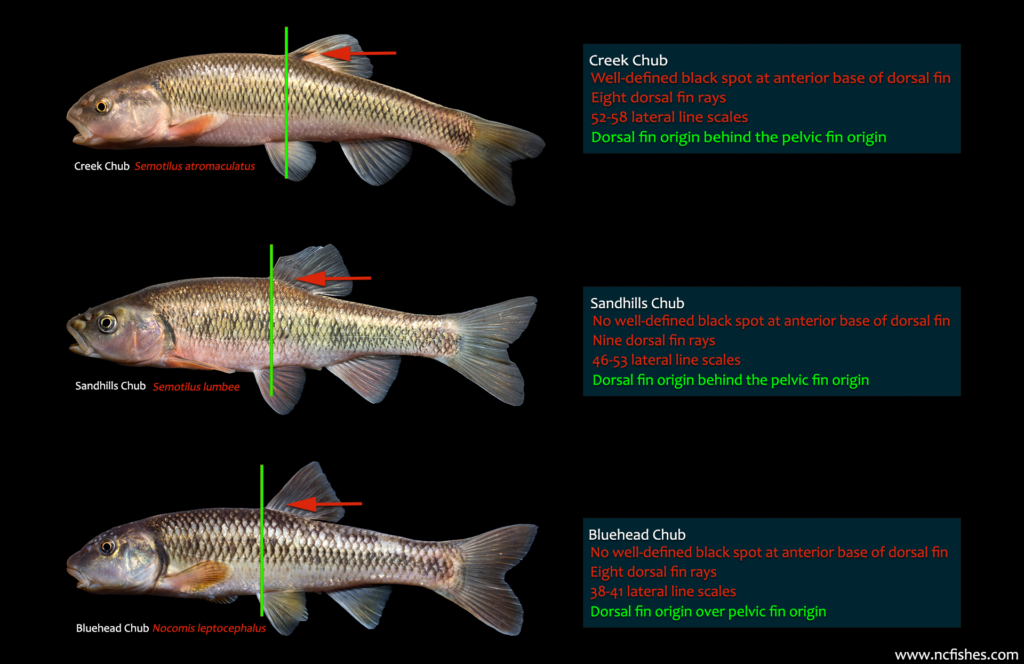
Gallery
